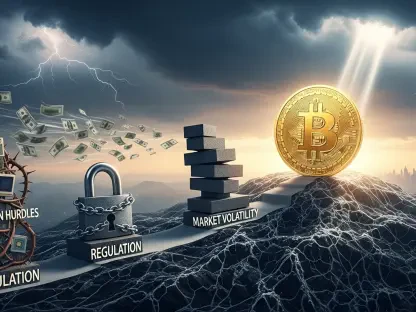The financial landscape is undergoing a seismic shift with the rapid rise of tokenized equities, digital assets that offer synthetic exposure to a company’s performance without the legal ownership, voting rights, or dividends tied to traditional stocks. This innovative sector, blending cryptocurrency and conventional markets, has captivated investors with its promise of accessibility and alternative investment avenues. However, beneath the surface of this burgeoning trend lies a growing unease among industry watchdogs. The World Federation of Exchanges (WFE) has sounded the alarm on potential risks these products pose to both retail investors and market stability. Concerns center on the lack of regulatory clarity, which could mislead stakeholders into believing they hold the same protections as traditional shareholders. As adoption accelerates across crypto-native and mainstream platforms, the urgency to address these gaps becomes paramount to prevent financial losses and preserve trust in the broader market ecosystem.
This emerging asset class has shown remarkable growth, with current market capitalization hovering around $360 million, according to data from RWA.xyz. Projections from Binance Research suggest a staggering potential market cap of $1.3 trillion if even 1% of global equities are tokenized on blockchains. Such optimism is fueled by increasing demand from retail and institutional investors seeking exposure outside conventional brokerage systems. Platforms like Robinhood, Kraken, and Gemini have already integrated tokenized versions of U.S.-traded stocks, reflecting a broader trend of blending digital and traditional finance. Yet, the WFE cautions that this rapid expansion could backfire if investors remain unaware of the fundamental differences between tokenized assets and actual shares. Misrepresentation in marketing practices risks eroding confidence not only in tokenized products but also in listed companies, potentially triggering a ripple effect across financial markets if left unchecked.
Navigating the Regulatory Minefield
Regulatory ambiguity stands as the most pressing challenge in the tokenized equities space, with industry bodies and authorities echoing the need for immediate action. The WFE has formally communicated its concerns to key regulators, including the U.S. Securities and Exchange Commission (SEC), the European Securities and Markets Authority (ESMA), and the International Organization of Securities Commissions (IOSCO). Their stance is clear: tokenized equities should not be promoted as direct equivalents to traditional stocks without explicit disclaimers on their limitations. The absence of defined rules around ownership, custody, and investor rights has created a precarious environment where misunderstandings can lead to significant losses. By advocating for expanded securities laws, the WFE aims to safeguard market integrity while allowing innovation to flourish under a structured framework that prioritizes transparency.
Reflecting on the trajectory of this sector, the push for tighter oversight emerged as a critical response to the risks that surfaced alongside rapid adoption. Efforts to clarify marketing standards and ownership rights were seen as essential steps to mitigate confusion among investors. The consensus among regulators and industry leaders underscored a shared commitment to balancing the transformative potential of tokenized assets with the imperative of protecting stakeholders. Looking ahead, the focus must shift to actionable solutions, such as establishing global standards for disclosure and custody practices. Collaborative dialogue between regulators and market participants will be vital to ensure that the growth of this promising sector does not compromise trust in financial systems. By addressing these systemic gaps proactively, the industry can pave the way for sustainable expansion while safeguarding against the pitfalls of unchecked innovation.









